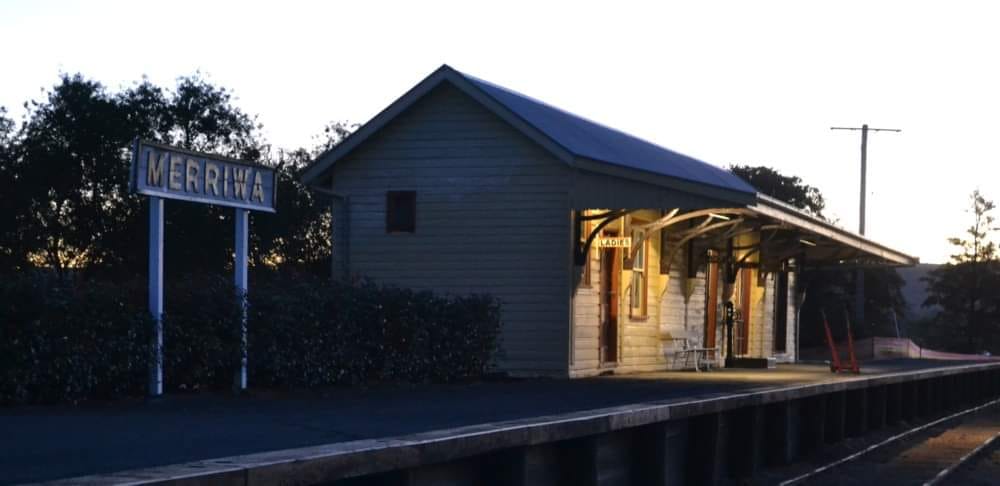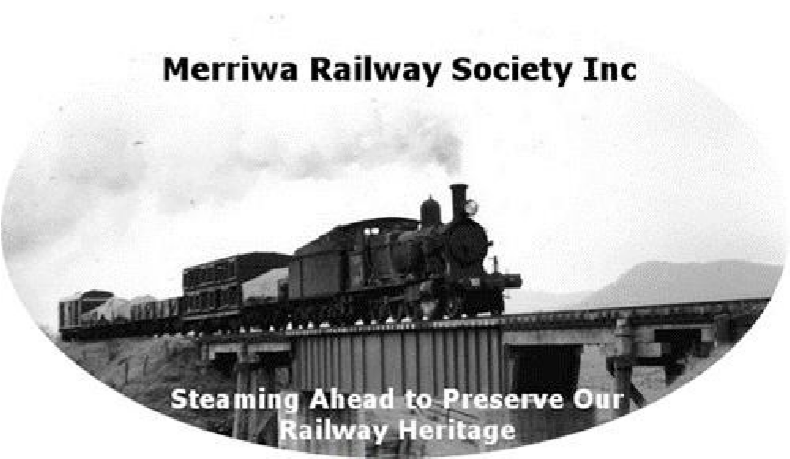The Early Years
It took 30 years of lobbying by locals back in the late 1800’s lead by Mr Alan McRae to have a commitment from the NSW Government to build a rail line to service Merriwa and the surrounding district.
The Merriwa Branch Line was opened in October 1917. The Branch started at Muswellbrook and locomotives were provided at Muswellbrook Loco Depot for all freight and passenger workings.
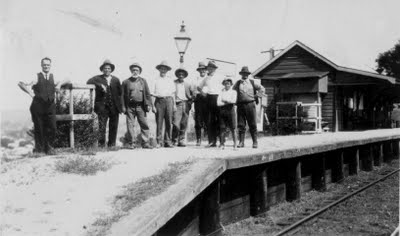
Stations on the Merriwa Line were: Roxburgh, Mangoola, Denman, Myambat, Sandy Hollow, Gungal, Wappinguy and Merriwa. During construction of the section from Denman to Merriwa, Denman had a small loco depot and servicing area and was the terminus from 1915 to 1917. After Merriwa Station was opened, the depot at Denman was closed with the turntable relocated to Merriwa.
A number of branch line locomotive classes worked the line in the early years but after World War 2, it was most common to have C30T and D50 class locomotives working the goods traffic and CPH Railmotors on Passenger duties.
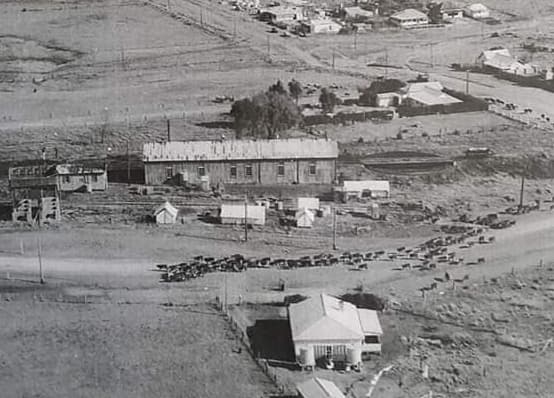
The Final Years of Steam
In the final years of steam working on the line, Broadmeadow based 30T and D50 Class steam locos would be seen regularly hauling goods and wheat trains to Merriwa with 3075, 3088, 3090, 3142, 5248, 5268 and 5278 all being regular visitors to the line. A typical sighting on 24 January 1970, 5268 was seen hauling No 6 Goods.
The line would play host to enthusiast specials during this time with the most notable being the Vintage train, hauled by 1243 and 1709, visiting Merriwa in 1967 for the 50th anniversary of the lines opening. Other Steam locomotives used on these enthusiast specials included 5132 and 3088.
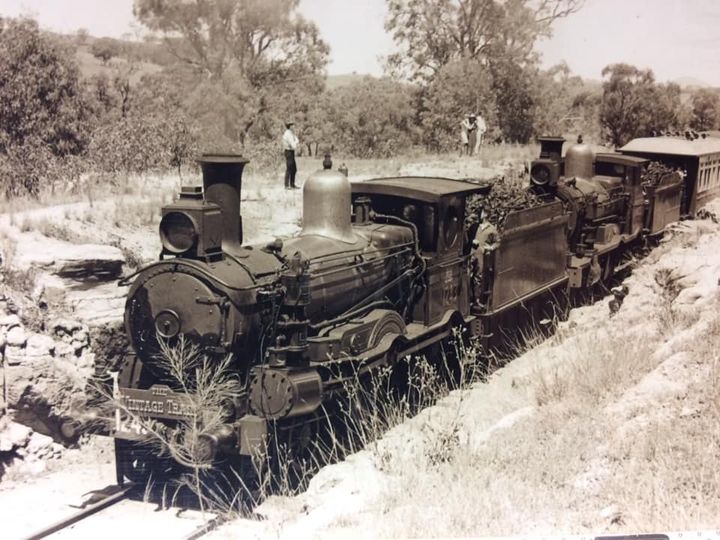
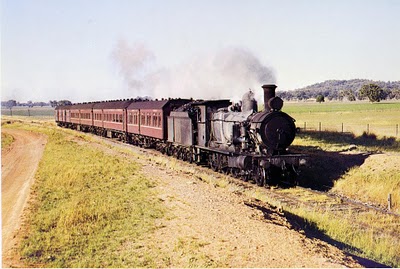
Locomotive 3090 was transferred to Broadmeadow Depot in June 1970 and almost immediately took up Merriwa line duties. It would have the distinction of taking the last regular steam hauled scheduled branchline service in NSW, working Nos 5 and 6 goods on 19 September 1970.
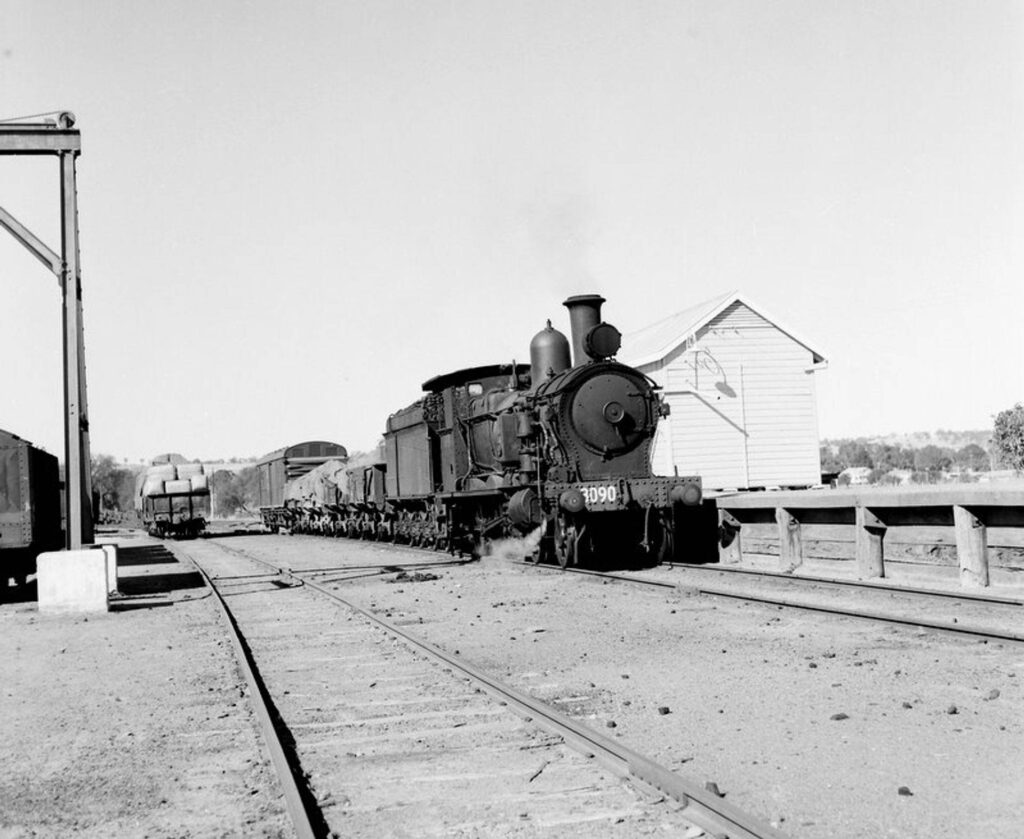
Passenger Workings and the CPH Railmotors
The railmotors that ran on the line were from the 42 Foot CPH’s nicknamed the “Tin Hares”. 37 of these railmotors were built in the 1920’s, along with 5 CTH Trailer Cars.
Built for country branch line workings, where a steam locomotive hauled train was deemed uneconomical to use. These were used on the lightly laid ‘Pioneer Lines’ throughout the state with much success.
In later years they were converted from petrol to diesel powered units which significantly improved their reliabilty.
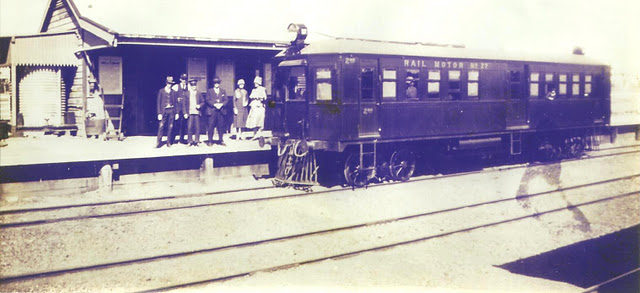
In the 1970’s, with passenger services being discontinued on many country branch lines including Merriwa, its passenger service ceasing in July 1973, many of the CPH’s were transferred to suburban workings on the Richmond line in tandem with the CTH Trailer Cars where they soldiered on until withdrawal in the early 1980’s. Many of them have since been preserved with several in operational condition.
Serveral CPH’s were noted as having been allocated to the Passenger services on the Merriwa Line at various times. They include CPH5 (originally preserved at the Parramatta Park Steam Tramway. Severely damaged by fire and subsequently scrapped), CPH16 (Under Restoration by Lachlan Valley Railway, Cowra), CPH27, CPH28 and CPH37 (Preserved – Operational. Currently on loan to the NSW Rail Museum Thirlmere).
From that point only diesel hauled goods trains could be seen on the line.
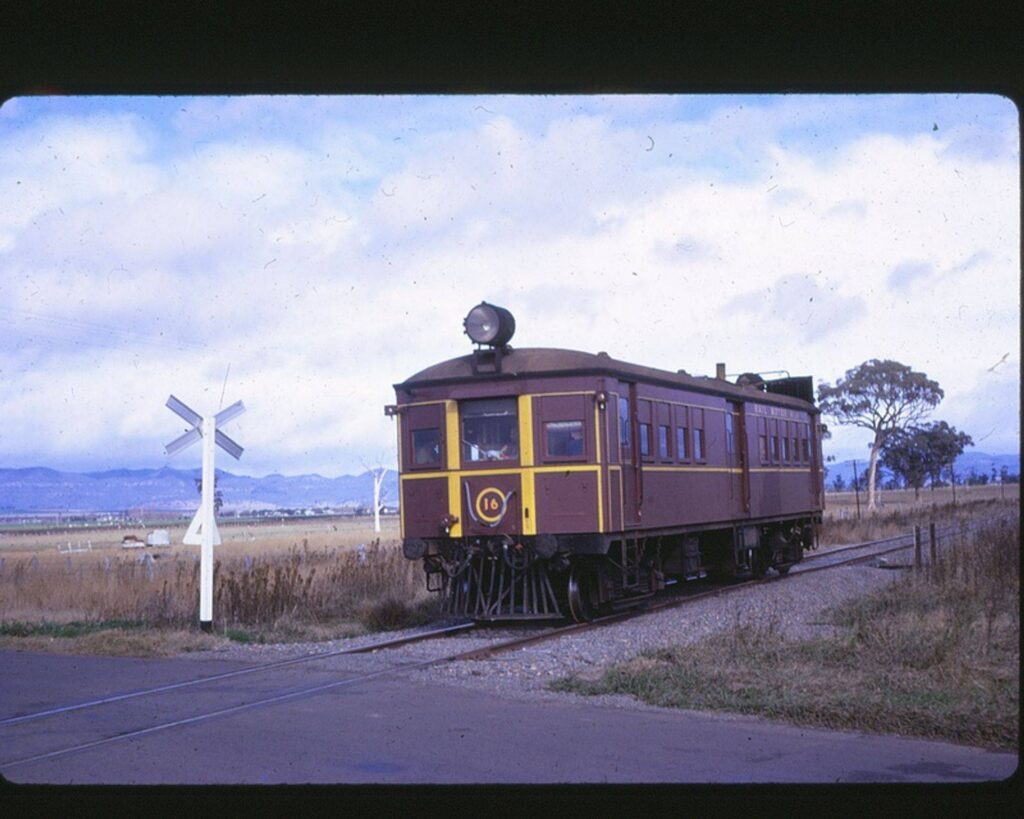
The Diesel Era
The first diesel working was recorded on the branch on 17 August 1968, when 4812 replaced the rostered locomotive which had failed. Double heading 48 class started working wheat trains in February 1970, while on 9 May 1970, 4856 worked the goods.
In the late 1970’s, to service the planned Ulan Coal Mine, the started but abandoned Sandy Hollow to Mary Vale line was to be built to Gulgong. For this work four 47 Class Diesels, along with 830 Class locomotives 847 and 849 which had been hired from Australian National were based at a temporary depot established at Sandy Hollow as the line was isolated while reconstruction works were taking place.
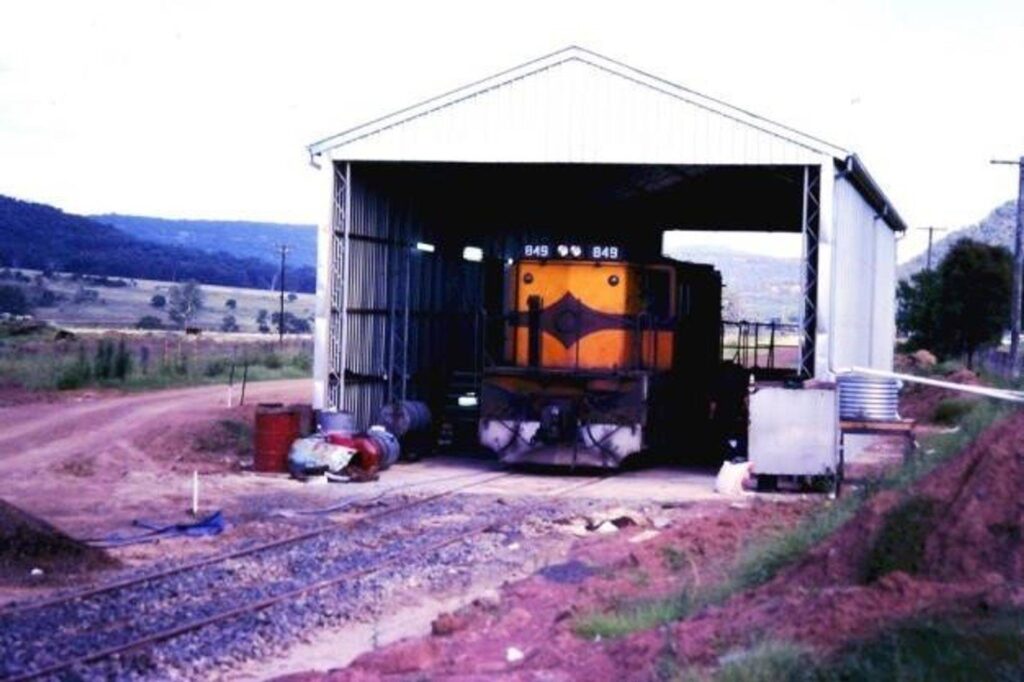
As part of this work the section from Muswellbrook to Sandy Hollow was completely rebuilt to mainline standard using heavier rail and concrete sleepers to allow heavy unit coal trains to work to the new Ulan Coal Mine. Ballast was sourced from a local quarry near Wappinguy, which meant that a temporary section of track was built at Sandy Hollow to form a triangle arrangement to allow the ballast trains to work directly to each section.
Trains to Ulan coal mine commenced running on 15 October 1982, hauled by the relatively new 81 class Diesel Electric Locomotives. The extension to Gulgong was completed two and a half years later on 23 May 1985 allowing trains to travel to Dubbo and further afield from the Port of Newcastle without having to travel via Sydney or the Blue Mountains.
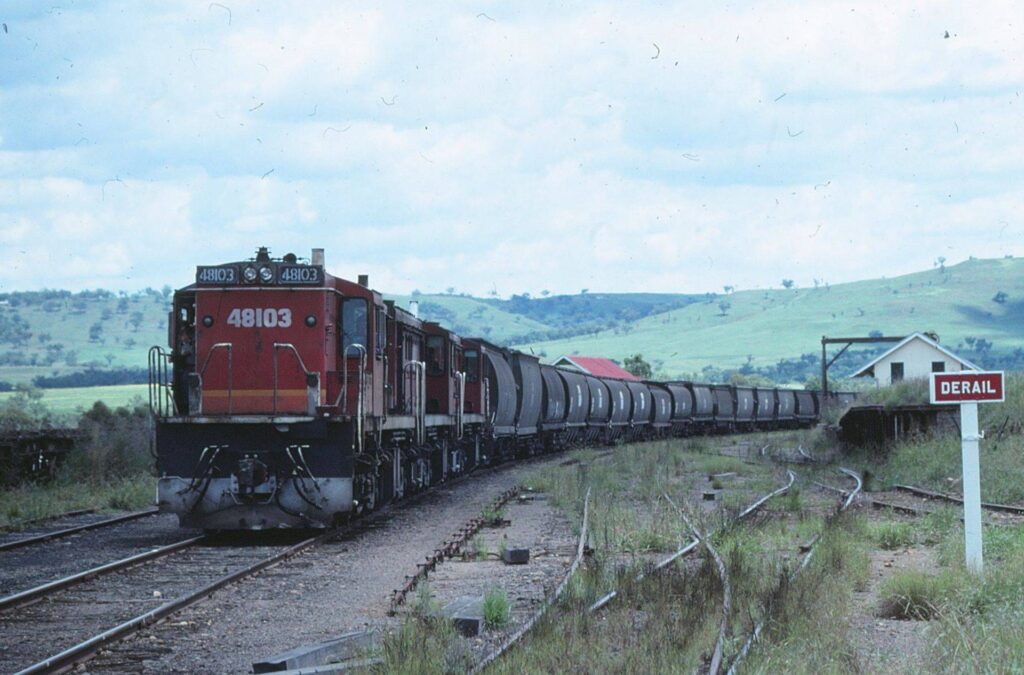
Closure of the Line
Since the section from Muswellbrook to Sandy Hollow had become part of the line linking the Ulan Colliery to the Port of Newcastle and later to Dubbo via Gulgong, a turnout was provided at Sandy Hollow to access the remaining 40km section of the original Branch Line.
The 1980’s were particularly bleak for the railways with the loss of freight traffic throughout the state and many branch lines being rationalised or closed due to the reduced demand for services.
The Merriwa Line was no exception with livestock traffic discontinued in favour of road transport and the cessation of general freight services.
Wheat trains would soldier on being hauled by 48 Class Diesels until March 1988 when the decision was made to discontinue services as it was deemed no longer viable.
No maintenance work has been carried out on the Sandy Hollow – Merriwa section since with sections of the line cut at various locations, including the approach spans of the bridge at Halls Creek, Sandy Hollow, Golden Highway level crossing at Gungal and Westwood Road level crossing.
During the 1990’s a small section of the branch line at Sandy Hollow was used to store old surplus freight wagons. Then in 2007 as part of upgrade works on the Ulan line the turnout was removed and the section straight railed.
The formation of the Merriwa Railway Society
The start of the MRSI took place during August 2009 when one of our original founders, Paul Bird, posted photos on Railpage and started the original Facebook page.
A group of Rail enthusiast’s got together on the Facebook page and commenced talking about the project and sharing ideas. An informal initial meeting took place at the historic Neath Hotel in September 2009.
A meeting then took place at the Merriwa RSL in October 2009 where the Society was formed with the goal of preserving the Station and Railway Precinct and establish a museum and tourist railway.
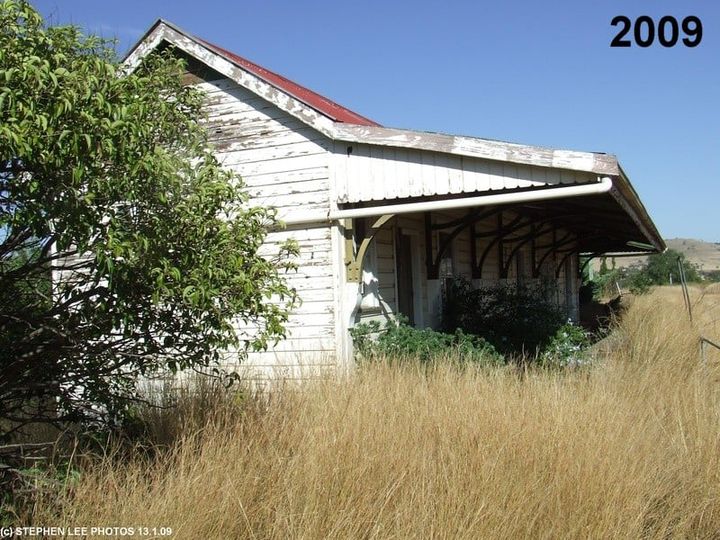
To date the Society has acquired numerous items for display and eventual use. The station building has been restored and forms part of the first stage of the museum with our small items collection on display.
